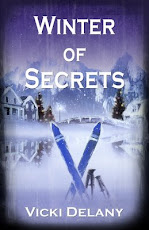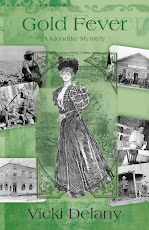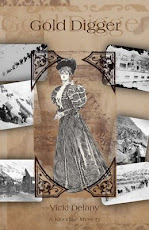I'd like to welcome Carole Shmurak, one
of my fellow authors from the brand new e-book 25 Years in the Rearview Mirror,
52 Authors Look Back. Carole is stopping by as part of the 25 Years in the Rearview Mirror Blog Tour. If
you enjoy magazine columns and Chicken Soup for the Soul books, then we're sure
you'll enjoy our collection of essays, designed to warm your heart, raise your
spirits and compel you to examine your own life. Get a full listing of authors,
essay titles and retailers here: http://stacyjuba.com/blog/25-years-in-the-rearview-mirror-52-authors-look-back/
Follow the 25 Years in the Rearview Mirror
Blog and Radio Tour schedule here and enter for some neat My Memories Suite
digital scrapbooking software: http://stacyjuba.com/blog/25-years-in-the-rearview-mirror-blog-tour/
And don't miss the chance to join the 25
Years in the Rearview Mirror Yahoo
Group, a fun and inspirational group that discusses the past and will help you
to stay on track for the future. http://groups.yahoo.com/group/25YearsRearviewMirror/
Now, Welcome Carole.
When
I see a movie that says “based on a true story,” I always wonder: what exactly
does that mean? How true is it?
So,
full disclosure here: I often base my books on events that really happened, but
I transfer them to times and places that are purely fictional. And the people
who inhabit my books are often modeled on real people — including myself.
Authors have always done this; Dorothy L. Sayers, for example, based Harriet
Vane largely on herself and used an unhappy love affair of her own as the basis
for Strong Poison. My detective,
Susan Lombardi, shares my work history: she’s a former high school science
teacher who is now a professor of education at a state university in Connecticut,
but as Sue Grafton once said of her detective Kinsey Millhone, she’s “smarter,
younger and thinner” than I am.
When
I started to write Deadmistress, I
wanted to capture the fishbowl setting of a New England boarding school,
similar to the one at which I’d taught for fifteen years. So, with tongue
firmly in cheek, I created Wintonbury Academy for Girls, familiarly called WAG,
and I populated it with characters based on my former colleagues and students.
Such a closed community obviously called for a traditional Christie-esque
mystery, with carefully planted clues and red herrings, as well as a map and
cast of characters. So for Deadmistress,
the plot was purely imaginary, but the characters and setting were essentially
real.
The
plot for Death by Committee, on the
other hand, was “ripped from the headlines.”
An article in The Chronicle of
Higher Education bore the headline, “Worst tenure case ever,” and reported
a tenure battle at a Midwestern university that had involved death threats, a
hunger strike, and political infighting of the worst sort. All I had to do was
transplant the tenure case to Susan’s department, and imagine how my university colleagues would react to
such events. And of course, I had to have one of the death threats get carried out.
 Death at
Hilliard High was based on two true stories: one that I had read
in a local newspaper about an African-American teacher harassed by her white
students at a suburban high school and one that was told to me at my high
school reunion about one of our former teachers who, rumor had it, murdered his
wife. I combined the two stories and again transplanted them to a Connecticut
setting, an affluent suburban high school at which Susan consults. This also gave me the opportunity to bring
back one of my favorite characters from Deadmistress,
Shauna Thompson, once a student at WAG, now a Yale graduate who is the only
black teacher at the high school. Shauna too was based on a student I had
known.
Death at
Hilliard High was based on two true stories: one that I had read
in a local newspaper about an African-American teacher harassed by her white
students at a suburban high school and one that was told to me at my high
school reunion about one of our former teachers who, rumor had it, murdered his
wife. I combined the two stories and again transplanted them to a Connecticut
setting, an affluent suburban high school at which Susan consults. This also gave me the opportunity to bring
back one of my favorite characters from Deadmistress,
Shauna Thompson, once a student at WAG, now a Yale graduate who is the only
black teacher at the high school. Shauna too was based on a student I had
known.
My
latest book, Most Likely to Murder,
came directly out of my own high school reunion. Having edited the reunion
booklet, I had the life stories of nearly 200 people in my head, and I knew
that some of them would make wonderful fictional characters. But since Susan
Lombardi is quite a bit younger than I am, I had to make my characters younger
than my classmates and I. That meant changing the names to those that were
trendy among babies in 1962 (Carols and Barbaras became Sharons and Lisas), and
updating the music that they danced to at the reunion to the late 1970s (the
Everly Brothers morphed into the BeeGees). The real joy of Most Likely to Murder was creating Susan’s high school. Since I’d
mentioned in an earlier book that Susan had grown up in New Jersey, I decided
to name the school after a famous New Jerseyite. To my delight, I found that
the jazz musician, Count Basie, had grown up in New Jersey, so I named the high
school after him. That enabled me to name the school newspaper The Jazz and the yearbook The Jitterbug, and then to add some of
my own high school reminiscences. And of course, I got to bump off one of my fictional
classmates and make a few of the others prime suspects.
So
there’s a lot of truth in my mysteries and a lot of fiction. Is there ever an
instance when the line between the two gets blurred? Well, there’s Susan’s
husband, Michael Buckler (also known as Swash) who is independently wealthy and
a gourmet cook; my own husband Steve is neither of those. Yet a number of our friends and acquaintances
have asked Steve about his blue silk pajamas (described in Deadmistress) — and our dentist repeatedly calls him “Swash.”
Carole B. Shmurak, Professor Emerita at Central Connecticut State
University, is the author of eleven books, including Deadmistress,
which introduced professor/sleuth Susan Lombardi, Death by Committee, Death at Hilliard High and Most Likely to Murder. Under the pseudonym Carroll Thomas, she is
the co-author of the Matty Trescott young adult novels, one of which (Ring Out Wild Bells) was nominated for
the Agatha for best young adult mystery of 2001.
You can find Carole online at:
website, http://www.carole-books.com
Facebook author page, http://www.facebook.com/carolemysteries.














Thanks, Vicki, for letting me stop by! And thanks, Stacy, for coming up with the idea for the anthology.
ReplyDeleteWill Susan ever go to college? At least retrospectively? Buggola
ReplyDeleteGood question! It would be repetitive to send her to a reunion. But perhaps an old college friend could get her involved in a mystery that would draw her back to the campus. Or she could, as I have, do some research that would take her back to her alma mater. Hmmmm...
DeleteThank you for sharing the histories of your stories, Carole. Has anyone you've known told you they recognized themselves or a situation with which they're familiar in your books?
ReplyDeleteSure! Lots of my former colleagues thought they recognized themselves in Deadmistress, and in a few cases they were right. And several of my high school classmates identified themselves in the book. People seem to like that - even when they're the murderer or the victim!
DeleteNice to have you here, Carole. A great post.
ReplyDeleteThanks, Vicki. I hope we get lots more visitors!
ReplyDeleteYour books sound like such fun, Carole. My husband went to a New England boarding school and when we went for his reunion, it was totally different from what my high school experience had been like. I can see where it would be a great setting for a mystery series. Thank you for hosting, Vicki!
ReplyDeleteThanks, Stacy. A New England boarding school is a special kind of fishbowl experience, especially for the faculty who live on campus. Like my protagonist, I went to a public high school, so a very different experience, as you say. I had great fun creating both schools, Wintonbury Academy for Girls in Connecticut for Deadmistress, and Count Basie High School in New Jersey for Most Likely to Murder.
Delete